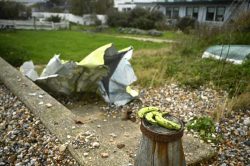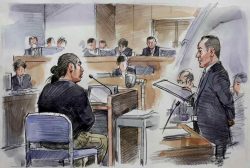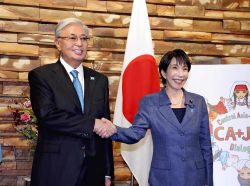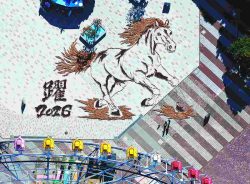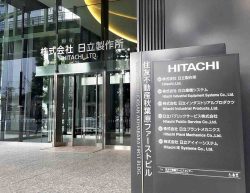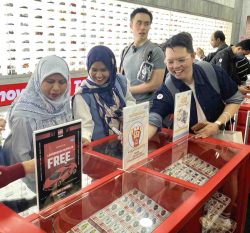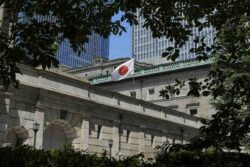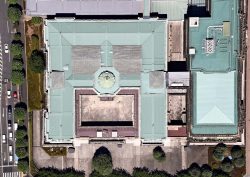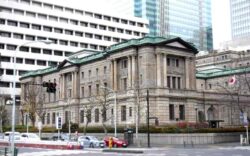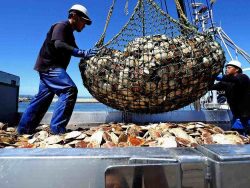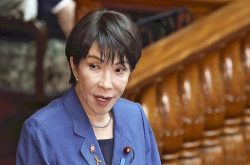Kishida took initiative in holding state funeral for Abe, public opposition unexpected
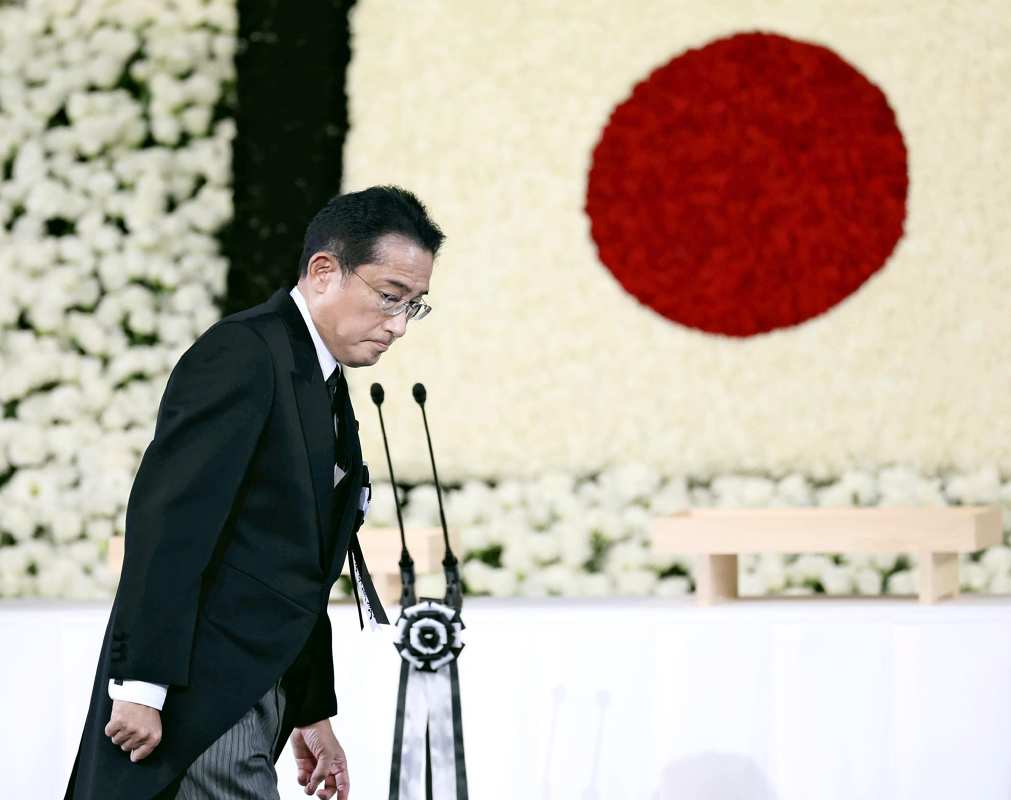
Prime Minister Fumio Kishida delivers his eulogy at the state funeral for former Prime Minister Shinzo Abe in Chiyoda Ward, Tokyo, on Tuesday afternoon.
20:00 JST, September 28, 2022
Despite the split in public opinion, a state funeral for former Prime Minister Shinzo Abe was held Tuesday. Prime Minister Fumio Kishida had positioned the event as “a ceremony to express [to Abe] the condolences of the entire nation,” but some have criticized the government for handling the matter poorly.
Prime minister’s determination
“Here today to mourn your passing are participants from every quarter of Japanese society as well as countries and regions around the globe,” Kishida said in his eulogy, while looking at Abe’s picture on an altar decorated with flowers that resembled the majestic Mt. Fuji, which Abe was said to have loved.
During his tenure as prime minister, Abe had many achievements in diplomacy and national security, including deepening the Japan-U.S. alliance. Kishida praised this leadership and pledged to carry on the “Abe line,” including in domestic politics, as he concluded his remarks.
It was Kishida who took the initiative on holding a state funeral for Abe. Soon after Abe was fatally shot on July 8 during a roadside speech for the House of Councillors election, Kishida openly showed his anger. “It’s like a gun being leveled at the entire nation,” he said to those around him.
Two days later, Kishida summoned senior government officials to the Prime Minister’s Office and said: “The people are also upset. We should make [Abe’s funeral proceedings] as close to a state funeral as possible.” He instructed them to consider the matter immediately.
Kishida insisted on holding a state funeral for Abe partly in consideration of the Abe faction, the largest faction in the Liberal Democratic Party. Both Kishida and Abe were also elected to the House of Representatives for the first time in 1993.
Controversial links
The state funeral for former Prime Minister Shigeru Yoshida was held 11 days after his death on October 20, 1967. Then Prime Minister Eisaku Sato is said to have considered it essential to gain the understanding of the Japan Socialist Party, which was the largest opposition party, and instructed his LDP to do so in advance behind the scenes.
This time, there was brief consideration within the government of providing an explanation in advance to the opposition parties, and going through the process of obtaining approval from the Diet. In the end, however, Kishida decided this was unnecessary. The atmosphere within the government and the ruling party was such that a state funeral was taken for granted, since “all of society is in mourning,” as people around Kishida expressed it.
The Cabinet Legislation Bureau supported the decision, saying, “There is no problem with the government making the decision.”
Six days after the incident, Kishida announced at a press conference that a state funeral would be held. But the situation did not develop as anticipated, due to the controversy unfolding in connection with the Family Federation for World Peace and Unification, formerly known as the Unification Church.
The opposition parties, including the Constitutional Democratic Party of Japan, sought to damage the administration by pursuing Abe’s ties to the former Unification Church.
Many within the LDP argued that it was inappropriate to link the controversy to the pros and cons of holding a state funeral for Abe, but opposition parties went on the offensive, not only calling into question Abe’s links to the former Unification Church but also claiming that the cost of holding the funeral was unclear.
In a public opinion poll conducted by the Yomiuri Shimbun from Sept. 2 to 4, 56% of respondents disapproved of the government’s decision to hold a state funeral, while only 38% approved. In the Yomiuri’s Aug 5-7 survey, 49% approved of the government’s decision, and 46% disapproved.
Kishida did not explain to the Diet the reasons for holding a state funeral until as recently as Sept. 8. Among other things, he said Abe had assumed the heavy responsibility of prime minister for eight years and eight months, the longest on record. However, his explanation before the Diet came nearly two months after his initial announcement and some within the ruling and opposition parties said Kishida only repeated the same explanation that he made earlier. This failed to sufficiently deepen the parties’ understanding regarding a state funeral, they said.
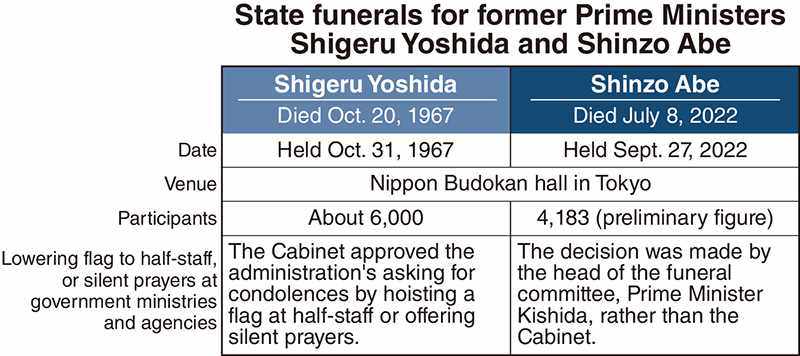
Avoiding ‘the people’
In his memorial address, Kishida refrained as much as possible from saying “the people,” as he was apparently conscious of the split in public opinion. This was to avoid any misunderstanding that he was forcing the people to express condolences.
At the state funeral for Yoshida, where the people were asked to express condolences, then Prime Minister Sato said, “Mr. Yoshida’s love for his country and his broad perspective is alive among the people, in feelings of respect and admiration for him.” Kishida’s eulogy stood in stark contrast to the one delivered by Sato, which emphasized “the condolences of the people.”
A senior LDP official said, “If [Kishida] had not neglected to lay the groundwork for obtaining opposition parties’ prior approval and had shown himself committed to providing a careful explanation from the start, he could have sent Mr. Abe off in a more tranquil environment.”
"Politics" POPULAR ARTICLE
-

Japan to Support Central Asian Logistics Route That Bypasses Russia, Plan to Be Part of Upcoming Summit in Tokyo
-

Japan to Tighten Screening of Foreigners’ Residential Status by Providing Information of Nonpayment of Taxes
-
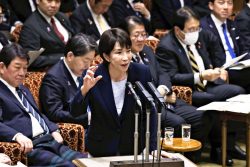
Takaichi Cabinet Approval Holds at 72% as Voters Back Aggressive Fiscal Stimulus, Child Benefits
-

Chinese, Russian Bombers Flew Unusual Path by Heading Toward Tokyo; Move Likely Meant to Intimidate Japan
-
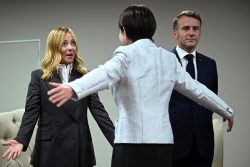
Takaichi Meets Many World Leaders at G20 Debut in Johannesburg; Speaks with Heads of Countries Including Italy, U.K., Germany, India
JN ACCESS RANKING
-

Keidanren Chairman Yoshinobu Tsutsui Visits Kashiwazaki-Kariwa Nuclear Power Plant; Inspects New Emergency Safety System
-

Imports of Rare Earths from China Facing Delays, May Be Caused by Deterioration of Japan-China Relations
-

Japan Pulls out of Vietnam Nuclear Project, Complicating Hanoi’s Power Plans
-

Govt Aims to Expand NISA Program Lineup, Abolish Age Restriction
-

Blanket Eel Trade Restrictions Rejected


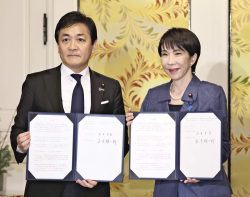
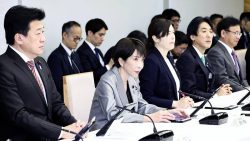
-250x164.jpg)

